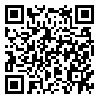BibTeX | RIS | EndNote | Medlars | ProCite | Reference Manager | RefWorks
Send citation to:
URL: http://jdisabilstud.org/article-1-2130-en.html
2- Assistant Professor, Department of Psychology, Sanandaj Branch, Islamic Azad University, Sanandaj, Iran
3- Assistant Professor, Counseling Department, Sanandaj Branch, Islamic Azad University, Sanandaj, Iran
Abstract
Background & Objective: The most important mission of schools and universities is to educate talented and elite human resources to conquer and reach the peaks of knowledge and provide a vision of progress and innovation for societies. However, these educational institutions depend on holding exams to assess students' knowledge levels in different stages to achieve a higher degree of education or to issue an academic certificate. This issue has made exams a barrier to achieving the desired job in students' academic success. Therefore, the present study investigated the effectiveness of an integrated intervention program based on self–directed learning and cognitive emotion regulation strategies in reducing test anxiety in female high school students in Ilam City, Iran.
Methods: The present study was quasi–experimental with a pretest–posttest design with a control group. The study population consisted of all female high school students in Ilam who were studying in the 2017–2018 academic year. Because at least 15 people are recommended for each study groups in the experimental methods, 30 students with a high test anxiety score were selected by purposive sampling. First, 5 schools were chosen as the sample from all schools in Ilam City. From these 5 schools, by referring to the schools and explaining the researcher about the study to the school principal and teachers, one school that measures students' test anxiety according to teachers and the school's principal was selected. Then, 30 students were chosen as the sample. Fifteen students were assigned to two groups: experimental and control groups. Finally, by observing ethical considerations and stating the research objectives, permission from the students was obtained to participate in the research. After consenting to participate in the study, the experimental group took part in ten 90–minute sessions for 5 consecutive weeks (two sessions per week). The integrated training program included self–directed learning and cognitive emotion regulation strategies. The control group received no intervention. Students answered the Spielberger (1970) questionnaire to collect data before and after the intervention. The obtained data were analyzed using the covariance analysis in SPSS version 23 software at a significance level 0.05.
Results: According to the results, the average test anxiety in the experimental group decreased from 36.40 in the pretest to 30.06 after the intervention of the integrated program based on self–directed learning and cognitive emotion regulation strategies. To perform an analysis of covariance, its assumptions were first examined. The results of Levene's test for homogeneity of variance of test anxiety variable (F=0.01, p=0.97) showed no significant difference in the variance of the groups. Therefore, the assumption of the equality of variance is established. The results of the homogeneity of the regression slope between the pretest and posttest scores in the groups for the test anxiety variable (F=2.15, p=0.154) show that the regression of the homogeneity of the regression slope is not significant, so the group–pretest assumption is approved. Therefore, the regression homogeneity assumption is established, and it can be ensured that the data of this study meet the assumptions underlying the analysis of variance. Also, the data in Table 2 show the results of univariate analysis of covariance on the mean posttest scores of dependent variables with pretest control in experimental and control groups. Therefore, teaching integrated programs based on self–directed learning and cognitive emotion regulation strategies has a reducing positive and significant effect on test anxiety (F=4.42, p= 0.001).
Conclusion: According to the research results, a combined program of self–directed learning and cognitive emotion regulation strategies can be used as a suitable intervention method to reduce students' test anxiety. Therefore, this method can be recommended to school principals and teachers to reduce students' anxiety.
| Rights and permissions | |
 |
This work is licensed under a Creative Commons Attribution-NonCommercial 4.0 International License. |



